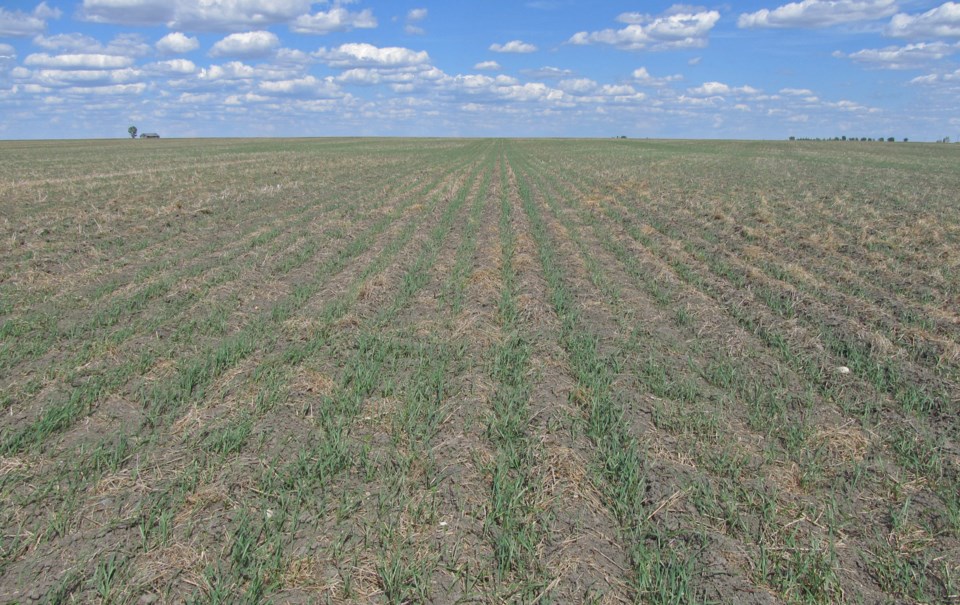I became part of the agriculture industry four years ago. Shortly after, I wrote, “Agriculture: My Journey so far”. It was a reflection on my first six months working in this amazing sector. Despite being new to agriculture I knew I had found where I belonged!
Sometimes I think that we forget that agriculture really is amazing. One of my most memorable experiences was being able to stand in front of a few hundred high school students as a volunteer for Agriculture in the Classroom and tell them how this industry has changed my life and the way I view my own educational path. It was through this opportunity that I recognized how diverse agriculture is, even the team within Cereals Canada.
The diversity that agriculture attracts is one of its main strengths. Almost on a daily basis I meet people from all over the world that have been attracted to Canadian agriculture. The value chain brings together people of almost every educational and cultural background. Agriculture’s people are its biggest asset.
Diversity goes beyond people. Students contemplating their career pathway should come to agriculture. One in eight people work in agriculture and no matter your passion there will be a connection back to the industry. Every day there is something new to learn, talk about, or problem to solve.
Navigating diversity of issues is not always easy but is extremely rewarding. It should always be seen as an opportunity, never a challenge that cannot be overcome. The issue of public trust is one example where agriculture’s diversity can be used as a strength. We are privileged to have a window into every part of this industry, from farm gate to plate. But consumers do not have this window. Consumers should be viewed asa part of our industry; they participate in it by buying our commodities and making them into meals to which for their families. Canadian agriculture has the diversity to speak to consumers no matter their background and help them answer the question “where does my food come from”. But to do that we need to work together and collaborate.
Collaboration means that we recognize how each person, organization, or segment of the value chain may experience things differently. If we are going to be able to respond to changing consumer needs around the world, we must use these different experiences and work together instead of the natural silos that emerge from our province, background or the part of the industry in which we operate.
I am likely a bit biased about the benefits of collaboration as my job is completely dependent on successfully building partnerships. This includes working directly with the Cereals Canada membership, but also outside organizations. Collaboration has shown me how much each one of us has in common. Organizations and people who think they are different usually find that goals are usually similar.
Collaboration is must more effective than individual efforts. Once we get down to specific projects it is always better if the message comes from not just one but many voices.
Farmers contribute to national organizations through their checkoffs. They are seeing the benefits of collaborative efforts among commodity groups to in joint projects like the Keep it Clean! campaign or the annual new crop missions. Both of these collaborative efforts have continued to become bigger and better each year in part to the cooperation between the national and provincial commodity organizations.
Another example of effective collaboration is the creation of a national wheat campaign designed to emphasize the nutritional benefits of products made from Canadian wheat and to counter some of the “wheat myths” growing on the internet. As a wheat value chain, we are seeing a positive impact of working together to develop messaging as well as fund research projects regarding wheat and its health benefits. Even though this project is still in its early stages, we are already seeing the advantages of working together. An immediate benefit has been the interest we have been getting from international customers. Some of Canada’s top importers of wheat are asking for the science-based messages around wheat’s nutritional value that we have developed and information on how to celebrate and promote wheat.
Agriculture is now a big part of who I am. I often get told I must have drunk the Kool-Aid, to which I proudly reply, it was actually some delicious beer made with Canadian barley. We should be proud of our industry not just because we are feeding people, but also because we are attracting a level of diversity which I feel stands out amongst other industries. We are also fostering collaboration and most importantly we continue to engage individuals to whom are already working in it. Each day I get to come to work and face the day, a day with endless possibilities, filled with new opportunities and challenges to which I know I will overcome. I am indeed grateful to be doing it and looking forward to what comes next.



